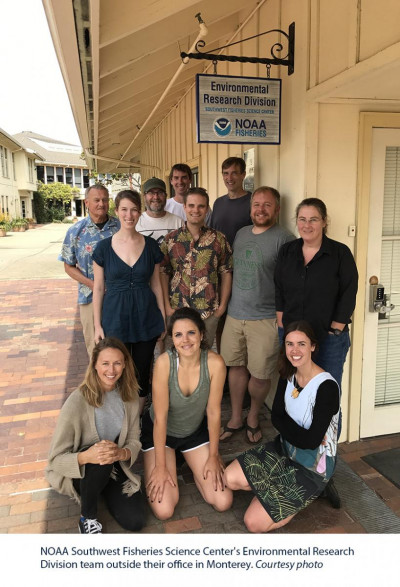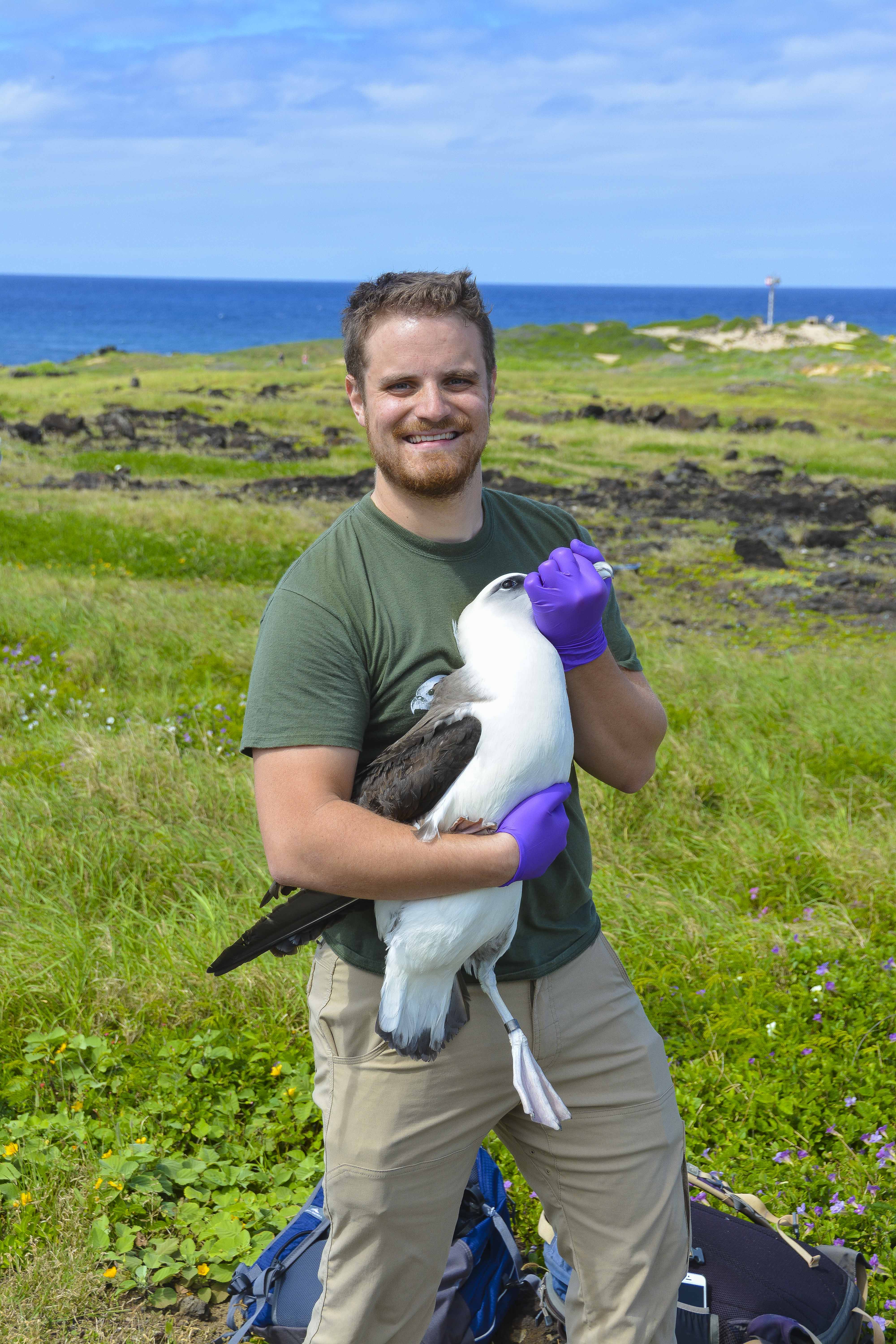BRTs, ERDDAP, BREP, DOM, the DGN, and those were only the tip of the iceberg.
I can never remember hearing so many acronyms in rapid succession. But perhaps the most intimidating aspect of my first meeting as a California Sea Grant State Fellow at the NOAA Fisheries Southwest Fisheries Science Center’s Environmental Research Division (SWFSC-ERD) was that everyone else in the meeting understood what was being discussed—myriad of acronyms and all—and provided feedback on the relevant discussion points.
I was lost. This was not how I expected my first meeting to go.
That said, there was palpable electricity in the air. They had so many projects on so many different subjects simultaneously in progress. It was overwhelming and thrilling.
During my PhD at UC Davis, I conducted basic science research in the narrow subdiscipline of marine sensory ecology. The reason I was interested in the California Sea Grant State fellowship is that I wanted to transfer my skills to more applied problems. The deep end I jumped into was the world of fisheries management.

My main fellowship project has been to utilize the data-rich National Bycatch Reports to conduct a continental-scale fisheries analysis to identify, based on a multitude of factors, which fisheries are most well-situated for dynamic management. In contrast to traditional static management, dynamic management allows boundaries of protected or managed areas to vary in space and time. With the rapid expansion of oceanographic and biological monitoring of marine ecosystems, dynamic management may be advantageous over traditional static management in certain cases. Mitigating bycatch is one arena where dynamic management has been applied successfully; however, dynamic management is under-utilized overall.
While the rest of the office works on the quantitative data science underlying the sophisticated dynamic management tools, I am the odd man out. It has been a daunting, but rewarding, challenge. Results are still coming in, but it seems like we will make a significant contribution when this project is completed and published. In early 2018, I plan to present this work at the Ocean Sciences Conference in Portland, Oregon.
Perhaps the most exciting aspect of my fellowship experience is the different collaborations I have been able to build and projects I have been able to work on. As I mentioned, the office has numerous ongoing projects, and my bosses encourage me to pursue those I am interested in. As a result, I am applying for two separate NOAA grants in my time as a fellow. The first is to continue and further develop the aforementioned dynamic fisheries management project beyond my fellowship year. The second is a NOAA Marine Debris Removal Grant, which I am writing with two Carmel High School students, who have spent the past two years cleaning up the tens-of-thousands of golf balls littering the surf zone in Carmel Bay from the local golf courses.
I have also had the opportunity to begin collaborating with Dr. Jeremy Goldbogen at the Hopkins Marine Station. Along with his lab group, I recently took at trip to Denmark to participate in a workshop on the visualization and analysis of high-resolution movement data from animal-borne tags. In the near future, I hope to take what I’ve learned from this workshop and apply it to conservation-related questions on baleen whales, to better learn how they forage and how they might interact with marine debris.
Thus far, my fellowship has been better than I could have imagined: interdisciplinary, collaborative, applied, and multifaceted. Living in Monterey—where I can see the ocean from my bedroom window and my commute is a 10-minute bike-ride along the coast—isn’t too shabby either. Upon reflection, this is the deep end I want to be in.
Written by Matt Savoca




